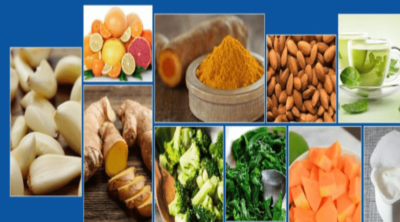
Squashes are known for their warm, delicious, and soothing flavor. This NutriNeat article presents the nutrition data and health benefits of hubbard squash. If you avoid squashes because they contain a lot of starch, then read on to know how the starch and other unique nutrients from this underrated vegetable can significantly improve your health.
Did You Know?
The botanical name of hubbard squash is Cucurbita maxima, and it is a type of winter squash. Apart from field pumpkins, hubbard is the largest winter squash. No other crop has so many cultivated forms as the species C. Maxima has. It is consumed in almost all parts of the world. It is actually a fruit by botanical standards, but it’s consumed more like a vegetable than a fruit. The orange-colored pulp and greenish seeds that are packed with nutrients are used in various dishes.
Winter squash requires some sunlight and warm weather to grow. Its hard and firm outer shell helps increase its shelf life and facilitates transportation. Hubbards are not perfectly round, but are slightly tear-drop shaped (plump in the middle and tapered at the neck). Usually, they are green, gray, or bluish-gray in color, and have bumpy skin. The golden hubbard squash comes with a bright orange skin. You can store these varieties up to 5-6 months through winter by just storing them in a cool and dry place. Hubbards are mildly sweet in flavor, but have a more dense flesh than other varieties (sugar pumpkin is the exception). Being quite large in size (can weigh up to 50-60 pounds), they are often sold in pieces. They are relatively inexpensive, and hence, are used as a substitute of pumpkins in all types of pies and soups. You can consume them in various ways, like dried, roasted, baked, boiled, and mashed. Although all varieties leave a sweet aftertaste, the golden one may leave a slightly bitter aftertaste.
Nutritional Information
According to the USDA National Nutrient Database, here is what baked hubbard squash (without salt) offers:
| Serving Size: 100 g | |
| Water | 85.10 g |
| Calories | 50 kcal |
| Protein | 2.48 g |
| Total lipid (fat) | 0.62 g |
| Carbohydrate | 10.81 g |
| Total Dietary Fiber | 4.9 g |
| Total Sugars | 4.9 g |
| Minerals | |
| Calcium | 17 mg |
| Iron | 0.47 mg |
| Magnesium | 22 mg |
| Phosphorus | 23 mg |
| Potassium | 358 mg |
| Sodium | 8 mg |
| Zinc | 0.15 mg |
| Vitamins | |
| Vitamin C | 9.5 mg |
| Thiamin | 0.074 mg |
| Riboflavin | 0.047 mg |
| Niacin | 0.558 mg |
| Vitamin B6 | 0.172 mg |
| Folate | 16 µg |
| Vitamin A, RAE | 335 µg |
| Vitamin A, IU | 6705 IU |
| Vitamin E (alpha-tocopherol) | 0.20 mg |
| Vitamin K (phylloquinone) | 1.6 µg |
| Lipids | |
| Total saturated fatty acids | 0.128 g |
| Total monounsaturated fatty acids | 0.046 g |
| Total polyunsaturated fatty acids | 0.260 g |
| Cholesterol | 0 mg |
| Other | |
| Caffeine | 0 mg |
Health Benefits
Nutritionists suggest that you should always buy certified organic winter squash. The soils used for growing other regular varieties may contain contaminants like PAHs (polycyclic aromatic hydrocarbons), because farmers consider squash as an inter-crop, growing of which promotes remediation of contaminated soils.
